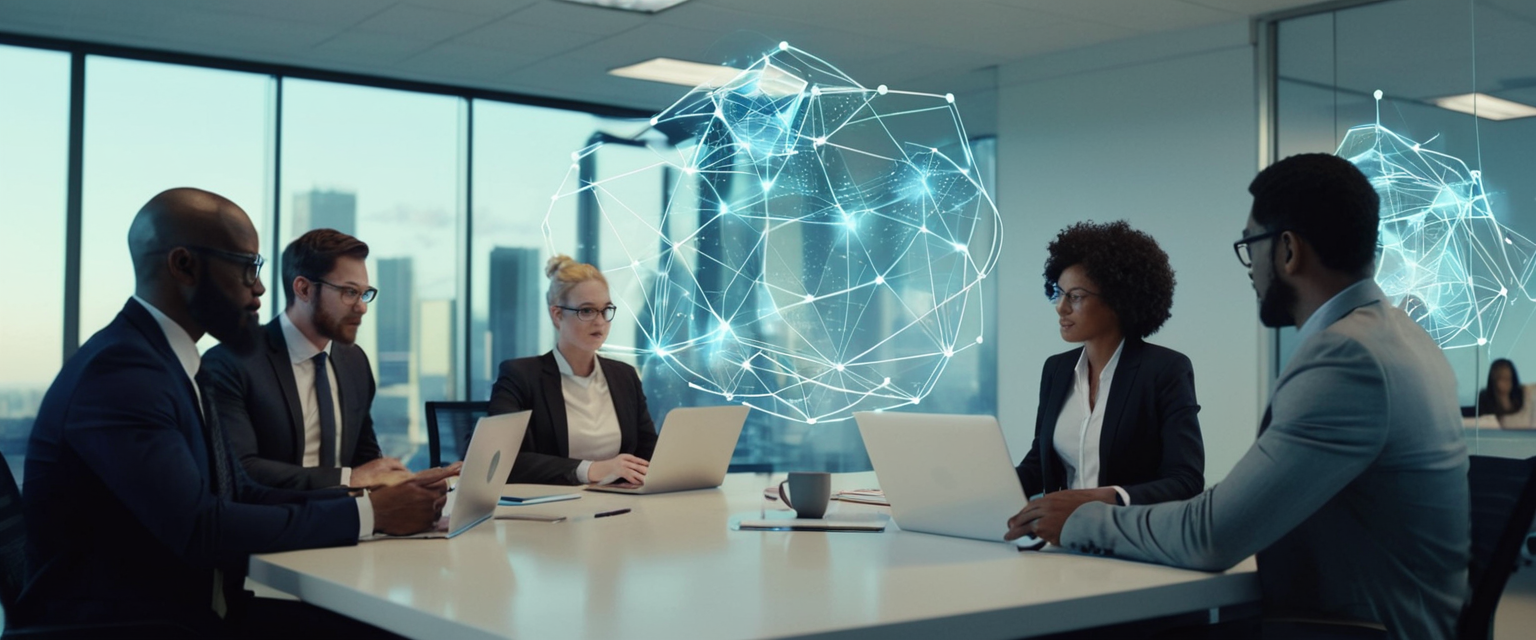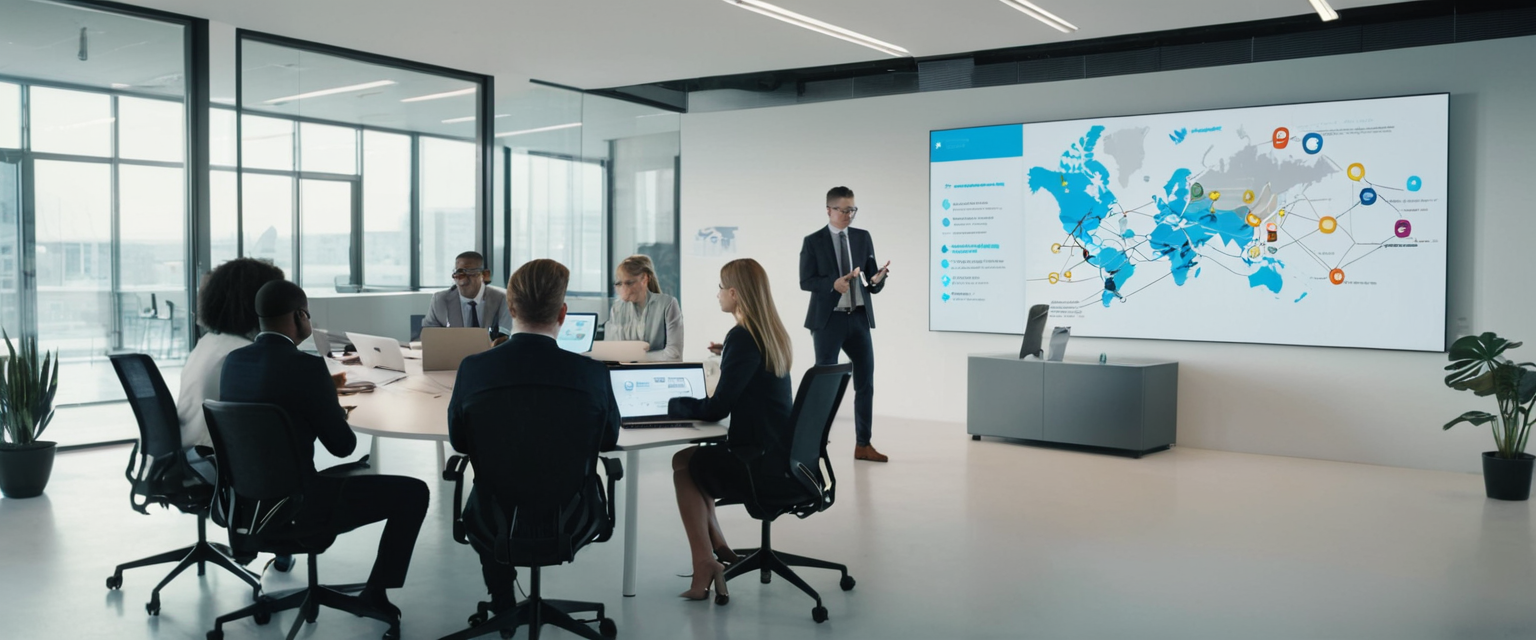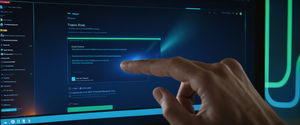
As organizations worldwide have embraced remote work and distributed teams, the ability to securely share meeting links has become a critical component of both operational security and privacy protection. While video conferencing platforms have become indispensable tools for business continuity and collaboration, the mechanisms through which meeting participants gain access to these virtual spaces present significant security and privacy challenges. Meeting links represent a unique vulnerability vector that attackers can exploit through phishing campaigns, credential theft, and unauthorized access, while simultaneously serving as conduits through which webcams and microphones—devices that are increasingly central to surveillance concerns—can be compromised. This comprehensive report examines the multifaceted landscape of meeting link security, exploring how organizations and individuals can safely share meeting invitations while maintaining protective barriers around their camera and microphone devices, preventing unauthorized recording and access, and complying with evolving regulatory requirements around data protection and privacy.
Understanding Meeting Links as Security Gateways: Fundamental Concepts and Risk Landscape
The vulnerability of meeting links fundamentally stems from their dual nature as both accessibility tools and potential attack surfaces. Meeting links serve as the primary mechanism through which participants gain entry to virtual collaboration spaces, yet this very accessibility creates significant security challenges. When a meeting host creates a link to share with colleagues, clients, or students, they are essentially creating a digital key that, if mishandled, can grant unauthorized access to sensitive discussions, confidential business information, and personal conversations. The implications extend beyond mere unauthorized attendance; through malicious access, attackers gain potential control over the participant’s camera and microphone devices, creating privacy violations that users may not immediately detect.
The primary concern with meeting links is that they are often treated as casual, throwaway URLs that can be forwarded quickly without careful consideration of distribution security. Many platform users fail to appreciate that a meeting link, if intercepted or leaked, becomes an invitation for any actor to join the meeting. Unlike password-protected resources that require knowledge of authentication credentials, meeting links in their unprotected form represent a standing invitation to join a session at any point. This creates particular problems in educational settings where instructors may share links broadly, and in professional environments where meeting schedules may be visible on public calendars or accidentally shared in company-wide communications. The risk landscape has expanded as threat actors have become increasingly sophisticated in their exploitation of meeting links, using them as vectors for phishing attacks, malware distribution, and credential harvesting.
Understanding the intersection between meeting link security and camera/microphone privacy requires recognizing that video conferencing inherently involves transmitting video and audio from users’ devices to remote locations. When unauthorized individuals gain access to meetings through poorly shared links, they potentially expose not only the visual and audio content of the meeting but also gain technical access to the devices themselves. Malware can be delivered through meeting environments to compromise webcams and microphones, allowing persistent surveillance even after the meeting has ended. Therefore, controlling who can access meetings through careful link sharing becomes a foundational element of device privacy protection.
Meeting Link Vulnerabilities and Common Attack Vectors in Modern Threat Landscape
The attack vectors through which meeting links are exploited have evolved considerably as cybercriminals have developed increasingly sophisticated techniques for infiltrating virtual meetings. One of the most prominent attack methods involves calendar hijacking and calendar-based phishing, wherein attackers send fraudulent calendar invitations that appear to originate from legitimate sources but contain malicious links disguised as meeting invitations. This attack vector is particularly insidious because many email and calendar systems automatically add calendar events without requiring explicit user confirmation, meaning that malicious invitations can appear on a user’s calendar without their knowledge or consent.
The mechanics of calendar phishing represent a sophisticated social engineering attack that exploits user behavior and default system settings. Attackers craft calendar invitations with subject lines that convey urgency—such as “URGENT – Emergency Meeting” or “Critical Business Alert”—designed to trigger immediate action without careful consideration. These invitations often include deceptive URLs that use various obfuscation techniques to hide their true destination. When a user clicks on what they believe is a legitimate meeting link, they may be redirected through multiple layers of redirects and tracking services before landing on a fraudulent login page that closely mimics the appearance of legitimate video conferencing platforms. At this point, users may enter their credentials, which are then captured by the attacker. The credentials often work across multiple systems because many users employ the same passwords across different platforms, or because their video conferencing credentials double as single sign-on (SSO) authentication for corporate systems.
Another significant vulnerability involves the reuse of meeting links and the predictability of meeting IDs. Many video conferencing platforms generate meeting IDs that follow recognizable patterns, making them susceptible to brute-force enumeration attacks where threat actors systematically try different ID combinations to discover and join meetings. This vulnerability was particularly evident in the early popularization of one major platform when researchers demonstrated that meeting IDs could be guessed or generated relatively easily, leading to widespread “Zoom-bombing” incidents where uninvited guests joined meetings to disrupt proceedings or share inappropriate content. While platforms have since improved their default security settings, this vulnerability persists for users who fail to enable protective features or continue using personal meeting IDs (PMI) for all their meetings rather than generating unique IDs for each session.
The exposure of meeting links on public platforms and social media represents an often-overlooked but dangerous attack vector. When meeting hosts or participants inadvertently share meeting links on public social media platforms, in unencrypted email threads, or on publicly accessible web pages, anyone with internet access can discover these links and join the meetings. Users frequently fail to appreciate that once a link is posted publicly, the host has effectively ceded control over who can access their meeting. Unlike password-protected meetings where the password can be changed, a public link remains usable until the meeting has concluded and the server has disposed of the session. This has led to numerous incidents where private corporate meetings, educational classes, and sensitive discussions have been infiltrated by unauthorized individuals simply because the host shared the link too broadly.
The supply chain attacks and legitimate platform spoofing represent another dimension of meeting link vulnerabilities. Sophisticated attackers create convincing replicas of legitimate meeting invitation pages and use various techniques including domain spoofing, URL masking, and visual mimicry to deceive users into believing they are accessing legitimate platforms. These spoofed pages often include all the visual elements of authentic platforms, including company logos, proper color schemes, and appropriately formatted login fields. When users unknowingly enter credentials on these fraudulent pages, attackers gain not only the meeting credentials but also comprehensive access to associated accounts and potentially the underlying corporate infrastructure if those credentials have SSO privileges.
Phishing Campaigns and Social Engineering: Weaponizing Meeting Invitations Against Users
The rise of meeting-link-based phishing campaigns represents one of the most consequential developments in contemporary cybersecurity threats. These campaigns are particularly effective because they exploit several psychological vulnerabilities inherent in modern work culture: the expectation of receiving meeting invitations, the perceived time pressure of business-critical communications, and the general tendency of users to trust communications that appear to come from familiar platforms or trusted colleagues. Unlike traditional phishing emails that may be recognized as suspicious, meeting invitations and calendar updates feel like normal business communications that deserve immediate action.
Recent phishing campaigns documented by security researchers reveal the sophisticated psychology employed by attackers. One particularly effective campaign created urgency by referencing recent system disconnections or security alerts, leveraging users’ anxiety about account security to drive them to “re-authenticate” on fraudulent pages. The phishing emails contained subject lines such as “Your Zoom Account Requires Verification” or “Urgent: Reconnect Your Meeting,” combined with hyperlinked text that appeared legitimate but redirected to malicious servers. These attacks capitalized on the human tendency to click on links from seemingly authentic sources without carefully examining the underlying URL or considering whether the request made genuine sense.
The sophistication of these phishing attacks has increased through the use of advanced URL obfuscation techniques. Rather than displaying an obviously suspicious URL, attackers employ various encoding methods, Unicode manipulation, and subdomain spoofing to make malicious links appear to match legitimate domain names. For example, attackers might use “zooml.ink” or similar variations that closely resemble “zoom.com” or employ legitimate but compromised subdomains that technically belong to well-known platforms. Users who fail to carefully inspect URLs before clicking are readily deceived by these techniques.
Once credentials are harvested through these phishing attacks, attackers gain several capabilities that extend far beyond simply joining unauthorized meetings. Many organizations use SSO with their video conferencing platforms, meaning that compromised video conferencing credentials provide entry points to corporate email systems, file sharing services, and other sensitive infrastructure. Attackers can then conduct reconnaissance on the organization, identify high-value targets for further compromise, and potentially establish persistent access for long-term espionage or extortion campaigns. This represents a particularly concerning convergence of physical privacy risks (surveillance through compromised cameras and microphones) and information security risks (unauthorized access to sensitive business data).
The calendar-specific phishing attacks deserving particular attention involve Google Calendar and similar calendar applications that, by default, accept calendar invitations without requiring user confirmation. This default behavior creates a scenario where attackers can inject malicious events into a user’s calendar that automatically appear as if they originated from trusted sources. The user may not even realize that a phishing event has been added to their calendar until they or a colleague attempts to join the “meeting” and discovers it is fraudulent. This represents a particularly insidious attack vector because it exploits system defaults designed to improve user experience rather than security.

Platform-Specific Security Architecture and Access Control Mechanisms
Different video conferencing platforms have implemented varying approaches to controlling access to meetings through link security mechanisms. Microsoft Teams, being integrated into the Microsoft 365 enterprise ecosystem, has built meeting access controls directly into its identity and access management infrastructure. When a Teams meeting link is shared, the underlying access is controlled through Microsoft Entra ID (formerly Azure Active Directory), which manages authentication and authorization for the entire Microsoft 365 environment. Teams implements multiple encryption protocols including TLS for data in transit and can optionally employ end-to-end encryption for particularly sensitive meetings. The platform also supports private channels, which restrict meeting creation and access to specific team members, providing an additional layer of isolation for confidential discussions.
Zoom, widely adopted in educational and small business settings, has evolved its approach to meeting access through several security features implemented in response to early platform vulnerabilities. Zoom implements meeting passcodes that, when enabled, require anyone joining the meeting to enter a password, even if they possess the meeting link. The platform supports waiting rooms, which allow hosts to control meeting entry by individually approving participants before they are granted full access to the meeting. Zoom has also implemented the option for “authenticated user only” meetings, which require participants to sign in with their Zoom account before joining. These features represent significant improvements over earlier versions where meeting access was controlled solely by knowing the meeting ID.
Google Meet, as a lighter-weight alternative to enterprise-grade platforms, implements access controls primarily through link sharing mechanisms and participant invitation systems. Google Meet generates unique meeting IDs embedded within links, and the platform allows hosts to specify whether meetings are accessible only to invited participants or open to anyone with the link. Unlike Zoom or Teams, Google Meet does not enable end-to-end encryption by default for regular meetings, though it does encrypt data in transit. The platform’s security model relies more heavily on careful link distribution practices rather than technical access control mechanisms built into the meeting creation process.
The encryption mechanisms employed by these platforms represent a critical distinction in their security architectures. Transport Layer Security (TLS) protects data as it moves across networks, preventing eavesdropping during transmission. However, TLS encryption alone does not prevent the video conferencing platform service provider itself from accessing meeting content. End-to-end encryption (E2EE), implemented by Zoom as an optional feature and by Microsoft Teams as a premium feature available through Teams Premium, ensures that only meeting participants can decrypt the audio and video streams. This distinction becomes particularly significant for organizations handling HIPAA-regulated health information or GDPR-protected personal data, as end-to-end encryption may be required to comply with regulatory requirements.
Microsoft Teams Premium, launched as an enhanced version of the platform, introduces additional security features specifically designed for meetings requiring heightened confidentiality. These include end-to-end encryption for audio, video, and screen sharing, as well as a recently announced “prevent screen capture” feature that blocks participants from taking screenshots or recording meeting content without authorization. This capability addresses a significant vulnerability where participants could circumvent meeting security by recording meetings locally on their devices, potentially exposing sensitive information to unauthorized parties. The prevention of screen capture extends to most third-party applications and native device tools, applying platform-specific protections appropriate to different operating systems.
Recording and transcription management represents another critical dimension of meeting link security that directly impacts privacy. When hosts share meeting links and participants join, those participants may not realize that recordings are being created or that transcriptions are being automatically generated. Many platforms now require explicit consent before recording or transcribing, addressing privacy concerns where participants discovered that their meetings were being recorded without their knowledge. Microsoft Teams and Zoom both support recording consent disclaimers that inform participants that a meeting is being recorded and obtain their explicit agreement to continue participating. Organizations managing particularly sensitive information should implement policies requiring that recording disclaimers explicitly explain the retention period for recordings and who will have access to the recorded content.
Safe Sharing Methodologies and Risk-Based Access Control Frameworks
The foundational principle of secure meeting link sharing involves treating links as sensitive credentials that should be distributed through secure channels and restricted to individuals with legitimate business reasons to attend. Unlike casual hyperlinks to public information, meeting links should never be shared on public social media platforms, posted on unencrypted messaging channels, or included in communications that might be archived and later accessed by unauthorized individuals.
Best practices for meeting link distribution establish that links should be shared exclusively through direct, authenticated communication channels. For internal organizational meetings, this means sending meeting links through corporate email systems that can be traced and audited, or through enterprise instant messaging platforms that support encryption and access controls. For external meetings involving clients or partners, particularly when handling confidential information, many organizations recommend establishing pre-approved participant lists and sharing links only with explicitly authorized individuals. This approach contrasts sharply with the common practice of broadly posting meeting links in group communications or public channels, which effectively invalidates any access controls implemented at the platform level.
Protect Your Digital Life with Activate Security
Get 14 powerful security tools in one comprehensive suite. VPN, antivirus, password manager, dark web monitoring, and more.
Get Protected NowThe distinction between open meetings and closed meetings necessitates different sharing strategies. Open meetings intended for large audiences with minimal security requirements may be appropriately shared more broadly, though even in these cases, organizations should avoid posting links on platforms where they remain permanently archived or searchable. Educational institutions offering public lectures or webinars have different sharing requirements than private corporate strategy sessions, and meeting link sharing policies should be calibrated to the sensitivity level and intended audience of each specific meeting.
Password protection and waiting room features provide additional layers of security particularly valuable for sensitive meetings. When hosts enable meeting passcodes, they effectively require two pieces of information for meeting access: the link (which may be somewhat openly shared) and the password (which must be communicated through a separate channel). This two-factor approach creates a significant barrier against unauthorized access because even if the link is intercepted or leaked, an attacker still requires the password. The password should be communicated through a distinct channel from the link itself—for example, the link might be shared via email while the password is provided verbally during a phone call—to prevent a single compromised communication channel from exposing both security credentials.
Waiting room functionality transforms the meeting access model from automatic entry to controlled admission. When enabled, participants join a waiting room and must be individually approved by the host before gaining full meeting access. While this approach adds friction to the meeting joining process, it provides the host with an opportunity to verify participant identity before granting access, preventing situations where uninvited guests simply join under false names and either disrupt the meeting or eavesdrop on sensitive discussions. For particularly sensitive meetings, this approach is strongly recommended, accepting the minor usability inconvenience as a worthwhile trade-off for meaningful security enhancement.
Authenticated user requirements ensure that only individuals who have created accounts with the video conferencing platform and have verified their identity can join meetings. This is particularly valuable in enterprise environments where organizations maintain control over user provisioning and can implement account policies requiring multi-factor authentication. When meetings require sign-in with an account that must use organizational credentials, the organization gains significantly enhanced visibility into who is accessing meetings and can implement policies to prevent external participants from joining if that is desirable.
Meeting verification checks, a newer feature implemented by Microsoft Teams to prevent unwanted automated bots from joining meetings, represent an evolving approach to access control. These checks employ CAPTCHA-style challenges requiring participants to demonstrate they are human rather than automated systems. This feature is particularly valuable for public webinars or open meetings where host control over participants may be limited but where preventing bot infiltration is still important. The feature supports both visual and audio CAPTCHA options to accommodate accessibility needs.
Recurring meeting management requires particular attention because the same meeting link often remains valid across multiple meeting instances. Organizations should establish policies requiring that recurring meetings use different passcodes across sessions or that waiting room functionality be enabled, preventing situations where an attacker might discover a link from one meeting instance and use it to infiltrate a completely separate meeting in a different time period. Some platforms allow hosts to change meeting passcodes for recurring meetings without having to reschedule the entire series, providing flexibility for enhanced security without significant administrative burden.
Recording, Transcription, and Sensitive Data Management Through Meeting Links
When users share meeting links and participants join meetings, the data flowing through those connections includes not only the audio and video in real-time but potentially also recordings and transcriptions that may persist long after the meeting has concluded. This temporal persistence of meeting data introduces distinct privacy considerations that extend beyond the immediate meeting session. Recording management has become increasingly important as organizations employ automatic recording capabilities for compliance and knowledge management purposes, often without explicitly communicating to meeting participants that their communications are being captured.
Recording consent and participant awareness represent critical elements of ethical and legal meeting management. Users accessing meetings through shared links often lack sufficient information about whether meetings are being recorded, who will have access to recordings, and how long recordings will be retained. Organizations handling regulated information subject to HIPAA, GDPR, FERPA, or similar regulations must implement recording policies that comply with applicable legal requirements. HIPAA regulations, for instance, require that healthcare organizations implementing video conferencing for telehealth services implement appropriate controls around recording and ensure that any recordings of protected health information are encrypted both during transmission and at rest.
The default settings for recording functionality significantly impact privacy outcomes. Many platforms have moved toward making recording consent explicit rather than presumed, requiring hosts to inform participants that recordings will be created and obtaining their affirmative consent before initiating recording. Some platforms implement automatic muting of participants and disabling of cameras when recording begins until participants affirmatively consent to remain in the meeting while being recorded. This approach protects privacy by ensuring that participants who are unwilling to be recorded can exit the meeting before their audio and video are captured.
Storage security for recordings and transcriptions represents another critical component of comprehensive meeting security. Recordings should be stored in protected locations with appropriate encryption, access controls, and audit logging. Rather than maintaining indefinite retention of all meeting recordings, organizations should establish data retention policies that delete recordings after a specified period unless there is a specific business or legal reason to maintain them. This approach minimizes the risk that recordings of sensitive information will persist in storage systems where they might eventually be accessed by unauthorized parties through data breaches or employee misconduct.
For particularly sensitive meetings, some organizations implement policies prohibiting recording entirely or requiring that recording be performed exclusively by designated personnel rather than defaulting to automatic capture of all meetings. Screen sharing during meetings introduces additional recording and data capture risks, as participants’ screen content may be captured in recordings alongside audio and video streams. Preventing screen capture through technical controls, particularly for sensitive information, has become increasingly important as organizations recognize that participants might attempt to record or photograph sensitive shared content.
Transcription introduces distinct privacy considerations because transcription services process raw audio content, converting it into text that may be more searchable and analyzable than raw video or audio files. This makes transcriptions particularly sensitive in contexts involving healthcare information, confidential legal discussions, or proprietary business strategies. Organizations should implement policies and technical controls ensuring that transcription occurs only when explicitly authorized and that transcriptions are encrypted and access-controlled with the same rigor as recordings.

Device Privacy, Camera and Microphone Security Within Meeting Environments
The fundamental vulnerability inherent to video conferencing involves granting remote participants access to users’ camera and microphone devices. Once a meeting link is successfully exploited to grant unauthorized access, the intruder potentially gains not only the ability to observe and listen to the meeting but also to interact with and potentially compromise the underlying computing device. Understanding device security within the context of meeting link sharing requires examining both accidental exposure through legitimate meeting participation and deliberate compromise through malware or unauthorized system access.
Webcam and microphone security begins with recognizing that these devices represent persistent security risks that extend far beyond their intended use. Malicious actors gaining access to computing devices through compromised meeting links or related malware delivery mechanisms can establish persistent surveillance capabilities, observing users’ activities and listening to conversations even when meetings have concluded. The example of the Seattle couple whose baby monitor was compromised by an intruder who used the webcam to watch their child represents an illustrative case of how connected devices with video and audio capabilities create risks that extend to anyone physically proximate to the device.
The technical mechanisms through which devices are compromised involve malware installation, commonly distributed through phishing links or drive-by downloads from compromised websites. Once malware is installed on a system, it can establish what security researchers term a Remote Access Trojan (RAT), which grants complete control over the device including access to webcams and microphones. RATs can simultaneously record keyboard input, capturing passwords and sensitive information; monitor browser history and emails; access files stored on the device; and exfiltrate this information to attacker-controlled servers. The sophistication of modern RATs allows attackers to operate covertly, with users often unaware that their devices have been compromised and are actively transmitting surveillance data.
Physical protections for webcams represent a low-technology but surprisingly effective countermeasure against unauthorized camera access. Covering webcams with physical barriers—whether adhesive covers, webcam shutters, or even folded Post-it notes—ensures that camera feeds cannot be captured even if malware gains control of the device, simply because the camera hardware is mechanically blocked. While this approach does not prevent attackers from controlling the device or accessing other sensitive information, it specifically prevents visual surveillance, addressing a particular concern about device privacy. High-profile technology executives, including Facebook founder Mark Zuckerberg, have publicly discussed employing this simple physical security measure.
Microphone security presents more difficult challenges than camera security because microphones are inherently designed to capture sound and cannot be physically muted as effectively as cameras can be covered. However, several protective measures can mitigate microphone privacy risks. Many modern operating systems provide visual indicators when microphones are actively in use, displaying icons in the system taskbar or notification area when applications access audio input. Users can identify suspicious microphone access by monitoring these indicators and investigating applications that are accessing audio without legitimate business reasons. Windows systems provide granular permission controls allowing users to specify which applications can access microphones, providing an additional layer of control.
Operating system-level permissions and controls have evolved to provide better protection against unauthorized camera and microphone access. Both Windows and macOS require applications to request explicit permission before accessing camera and microphone hardware, and users can review which applications have been granted these permissions and revoke access as needed. For organizations managing corporate devices, administrators can implement policies enforcing which applications are permitted to access cameras and microphones and potentially require multi-factor authentication or supervisory approval before granting access to particularly sensitive applications.
The intersection between meeting link security and device privacy becomes particularly acute when considering malware delivered through malicious meeting links. Phishing emails directing users to fraudulent meeting pages can simultaneously capture login credentials and deliver malware payloads that compromise device security. Organizations should implement comprehensive endpoint protection including malware detection and prevention, behavioral analysis capabilities, and regular security scans to identify compromised devices. Users should be educated to recognize the warning signs of device compromise, including unexpected fans operating noisily (indicating increased processing load), battery draining faster than usual, and unusual network activity.
Network-level protections including Virtual Private Networks (VPNs) provide an additional layer of security for meeting participation, particularly for users connecting from public or untrusted networks. VPNs encrypt all traffic between the user’s device and the VPN service, preventing observation of meeting participation patterns or interception of meeting links or login credentials on public networks. While VPNs introduce slightly increased latency and may reduce bandwidth available for high-quality video streams, the security benefit of protecting communications on untrusted networks justifies this minor performance trade-off.
Authentication Mechanisms and Identity Verification in Meeting Access
Identity verification represents a critical component of controlling who accesses meetings through shared links. Simple meeting links without any authentication requirement effectively grant access to anyone possessing the link, with the only verification being that the person has successfully clicked a hyperlink and loaded a web page. Enhanced authentication mechanisms significantly improve control over meeting participants by introducing verified identity requirements.
Multi-factor authentication (MFA) for meeting platform accounts ensures that compromised passwords alone cannot grant access to user accounts used for joining meetings. By requiring a second factor—such as a time-based one-time password from an authenticator application, a code sent via SMS, or a biometric verification—organizations can prevent attackers who have harvested passwords through phishing campaigns from immediately accessing video conferencing platforms. For organizations managing sensitive meetings, implementing MFA organization-wide significantly improves the security posture by preventing unauthorized access even when individual credentials have been compromised.
Single Sign-On (SSO) integration between video conferencing platforms and organizational identity systems provides both security benefits and administrative efficiency. When video conferencing platforms integrate with enterprise identity providers such as Microsoft Entra ID or Okta, the organization gains enhanced visibility into meeting access and can implement consistent authentication policies across all collaboration tools. Additionally, SSO reduces password fatigue, as users need remember fewer passwords and are less likely to employ weak passwords or reuse passwords across systems when a single SSO identity can authenticate them to multiple applications. From a security perspective, SSO allows organizations to centrally manage access, implementing policies such as “accounts that have not been used in thirty days will be disabled” across all platforms simultaneously rather than managing access independently for each application.
Verification checks for meeting join requests, such as CAPTCHA challenges requiring participants to demonstrate they are human rather than automated systems, represent an evolving approach to preventing bot infiltration of meetings. While CAPTCHA checks add a minor friction point to the meeting join experience, they effectively prevent scenarios where automated attack systems attempt to enumerate and join meetings to disrupt proceedings or perform reconnaissance. The implementation of these checks is particularly valuable for public webinars or open meetings where other access controls may be minimal.
Guest participant identification capabilities allow hosts and internal meeting participants to identify when external participants without organizational accounts have joined meetings, providing visibility that can help hosts implement appropriate information handling practices. When meetings include both internal employees and external guests, participants should be aware of who the guests are and ensure that discussions of proprietary or confidential information are appropriately limited to ensure information is not inadvertently shared with competitors or other unauthorized parties.
Organizational Policies, Compliance Requirements, and Governance Frameworks
Organizations managing video conferencing infrastructure must establish comprehensive policies governing meeting link sharing practices and ensuring compliance with applicable regulatory requirements. Different regulatory frameworks impose distinct requirements on how organizations must manage video conferencing security and participant privacy. Healthcare organizations operating under HIPAA must ensure that video conferencing platforms are capable of providing the audit controls, encryption, and access controls required by the regulation. Educational institutions subject to FERPA must implement controls ensuring that student records and personally identifiable information discussed in virtual meetings are protected appropriately.
Organizations processing personal data of European Union residents must comply with GDPR requirements for data protection and security. GDPR compliance requires that organizations implement adequate technical and organizational measures to protect personal data, maintain audit trails showing who accessed what data and when, and demonstrate a legitimate legal basis for processing personal data in video conferencing contexts. When video conferencing involves automatic recording and transcription, organizations must ensure that participants consent to this data processing and that the organization has implemented lawful bases for both the recording and any subsequent use of recordings.
Meeting link security policies should establish standards for when and how different types of access controls should be employed. Policies might specify that open meetings requiring minimal authentication can use simple link-sharing approaches, while meetings involving confidential business discussions must employ passcode protection and waiting room functionality. Policies should address whether Personal Meeting IDs should be used for recurring meetings or whether unique meeting IDs should be generated for each session to prevent link reuse attacks. Organizations should establish standards for meeting link communication channels, specifying that links should be shared through corporate email or messaging systems rather than personal email accounts or public social media platforms.
Data Protection Officer (DPO) or Chief Information Security Officer (CISO) responsibilities should be clearly defined with regard to video conferencing security governance. These roles should have oversight responsibility for ensuring that video conferencing platforms meet organizational security requirements, monitoring for security vulnerabilities or breaches related to video conferencing, and ensuring that security incidents involving meeting links are promptly addressed. Organizations should establish incident response procedures specifying how unauthorized meeting access incidents should be handled, including notification to affected participants, investigation procedures, and documentation.
Meeting host training represents an essential component of effective organizational governance. Meeting hosts who do not understand the distinction between different access control options or who are unaware of security risks associated with certain link-sharing practices inadvertently create security vulnerabilities. Organizations should provide training to all meeting hosts explaining when different security features should be employed, how to enable and use passcodes and waiting rooms, how to configure recording consent requirements, and how to handle situations where unauthorized guests have joined meetings.
Third-party vendor assessments should include evaluation of how video conferencing platform providers handle meeting security and link access controls. Organizations should understand the encryption mechanisms employed by platforms, the granularity of available access controls, compliance certifications that platforms have obtained, and the provider’s track record in addressing security vulnerabilities. For particularly sensitive information, organizations may determine that enterprise-grade platforms with end-to-end encryption, advanced audit controls, and strong security certifications are justified investments despite their higher costs compared to consumer-oriented alternatives.

User Education and Security Awareness: Building a Culture of Meeting Link Security
The technical sophistication of video conferencing platforms and access control mechanisms means little if users fail to understand security risks or neglect to employ available protective features. Security awareness training has emerged as a critical complement to technical security controls, ensuring that users understand the risks associated with meeting link sharing and can make informed decisions about appropriate security practices.
Training programs addressing meeting link security should cover the range of attack vectors through which meeting links are exploited, from simple link leakage to sophisticated phishing campaigns and calendar hijacking. Users should understand how to identify suspicious meeting invitations, including recognizing urgency language that may indicate phishing attempts, evaluating whether invitation sources are legitimate, and verifying meeting details through independent communication with the supposed organizer. Users should be taught to hover over hyperlinks before clicking to reveal the underlying URL and to be suspicious of URLs that do not match the expected domain for the advertised meeting platform.
Phishing simulation campaigns represent an effective educational technique allowing organizations to provide realistic practice in identifying and rejecting phishing attempts without exposing users to actual malicious threats. When security teams send simulated phishing emails to employees and measure click-through rates, they can identify employees requiring additional training and can measure the effectiveness of security awareness programs over time. Employees who fall for simulated phishing should be automatically enrolled in remedial security training explaining why the simulated message was suspicious and how similar real threats should be handled.
Users should be educated on the risks of recording and screen capture in meetings, understanding that visual and audio content captured in meetings can be preserved indefinitely and potentially shared with unauthorized parties. Users should know how to disable automatic recording capabilities if their organization allows them to do so, and should be comfortable requesting that hosts disable recording if they will be sharing sensitive personal information or if the meeting context suggests that recording is inappropriate. Users should understand their rights with regard to meeting recordings and should be empowered to decline participation in meetings that will be recorded if they are not comfortable with that practice.
Device security education should address how users can protect their webcams and microphones, understanding that covering webcams and monitoring microphone permissions are practical, low-cost protective measures. Users should be educated on the signs of device compromise, including unusual fan noise, unexpected CPU usage, or unusual network traffic, and should know how to report suspected compromises to their IT department. Users should understand that video conferencing alone does not compromise device security—it is the combination of video conferencing access with malware or other system compromise that creates device privacy risks.
Recurring training addressing emerging threats is essential because the security landscape for video conferencing continually evolves. As attackers develop new exploitation techniques, as new platforms emerge with different security architectures, and as organizational needs shift, security awareness training must be regularly updated to remain relevant. Quarterly or semi-annual refresher training ensures that security concepts remain prominent in users’ minds and provides opportunities to address newly discovered vulnerabilities or threats.
Solidifying Safe Meeting Link Sharing
Secure meeting link sharing represents a convergence of technical platform capabilities, organizational policies, user behavior, and regulatory compliance requirements. No single approach is sufficient to ensure meeting link security; rather, comprehensive security requires layered defensive strategies addressing vulnerabilities from multiple angles. Organizations must evaluate their specific risk profile—considering whether meetings typically involve external participants, whether sensitive information is frequently discussed, and whether regulatory requirements impose specific controls—and calibrate their meeting link security posture accordingly.
The foundation of meeting link security involves recognizing that meeting links are not casual URLs but rather credentials that grant access to virtual spaces where sensitive business discussions occur and where participants’ cameras and microphones may be accessed. Treating meeting links as confidential credentials, limiting distribution to only individuals with explicit business reasons to attend meetings, and communicating links through secure channels rather than public platforms represents the foundational practice from which more sophisticated security controls extend. When meeting links are carefully controlled, the risk of unauthorized meeting access due to link leakage alone is substantially reduced.
Technical security controls implemented by video conferencing platforms provide important protections that organizations should actively enable. Passcode protection requiring a separate credential beyond simple link possession, waiting room functionality allowing hosts to approve participants before granting full access, and multi-factor authentication for platform accounts all provide meaningful barriers against unauthorized access. Organizations requiring the highest level of security should consider platforms offering end-to-end encryption, ensuring that meeting content is encrypted in such a way that even the platform service provider cannot access it.
Recording and transcription management requires explicit governance establishing when recording is permitted, whether participants must consent before being recorded, how long recordings are retained, and who has access to recordings. Organizations handling regulated information subject to HIPAA, GDPR, or similar requirements must ensure that recording policies comply with applicable legal requirements, implementing encryption for recordings and access controls restricting who can view recordings. The default assumption should be that meetings are not recorded unless explicit business reasons require recording and explicit processes ensure that participants consent to being recorded.
User education and security awareness represent essential complements to technical controls, ensuring that users understand risks and employ available security features appropriately. Users should be trained to recognize phishing attempts that exploit meeting invitations, to understand how to employ access control features, and to recognize warning signs of device compromise. Regular security awareness training, simulated phishing campaigns to measure training effectiveness, and incident response procedures for addressing suspected security breaches all contribute to maintaining organizational security posture over time.
Organizations should implement comprehensive policies governing meeting link sharing practices, specifying which access control features should be employed for different meeting types, establishing standards for link communication channels, and clarifying roles and responsibilities for meeting security governance. Video conferencing platform selection should include evaluation of security architecture, encryption capabilities, compliance certifications, and the provider’s track record in addressing vulnerabilities.
The convergence of meeting link security, webcam and microphone privacy, and broader device security creates an integrated landscape where vulnerabilities in one area can undermine protections in others. Phishing campaigns that exploit meeting invitations may deliver malware that compromises device security. Unauthorized meeting access may represent reconnaissance activity in preparation for more serious attacks. Physical security measures such as covering webcams and monitoring microphone permissions provide practical protections against the worst-case scenario where devices are compromised and attackers establish persistent surveillance capability.
The future security landscape for video conferencing will likely involve continued innovation in both attack techniques and defensive mechanisms. Organizations must maintain vigilance, regularly reassessing their security posture as new vulnerabilities emerge and new attack techniques are discovered. By implementing layered defenses combining technical controls, organizational policies, governance structures, and user awareness, organizations can substantially reduce the risks associated with meeting link sharing while maintaining the productivity benefits that video conferencing provides as an essential tool for modern distributed work.






